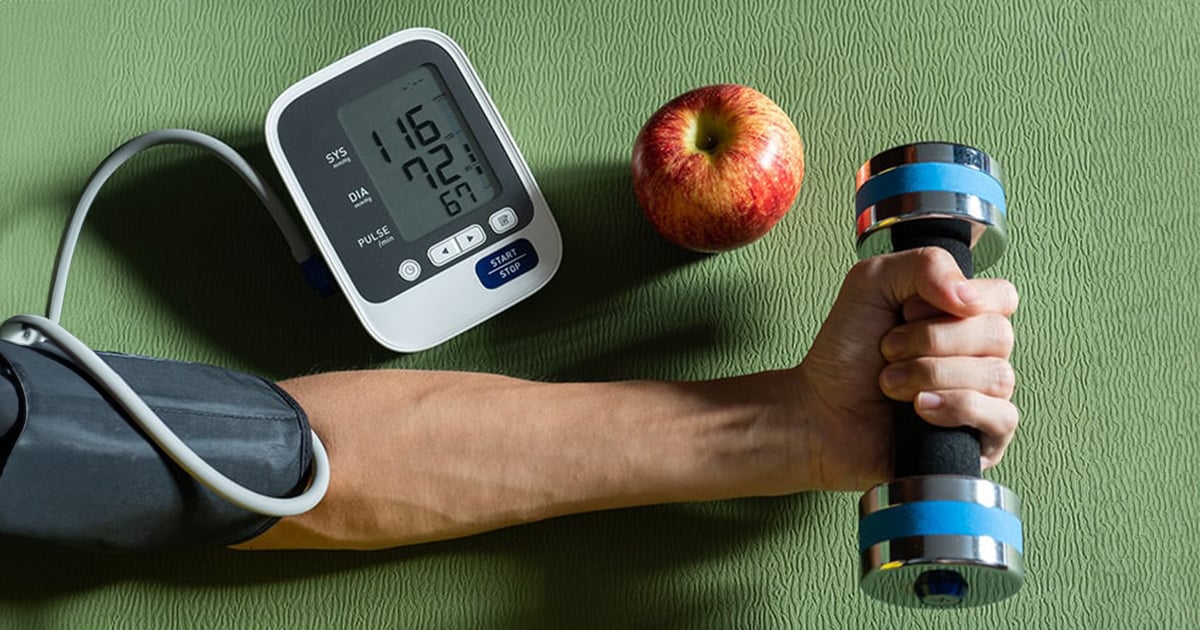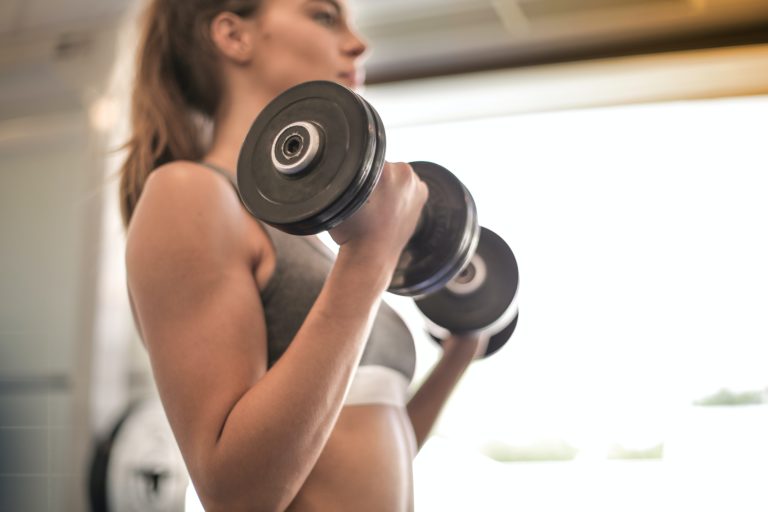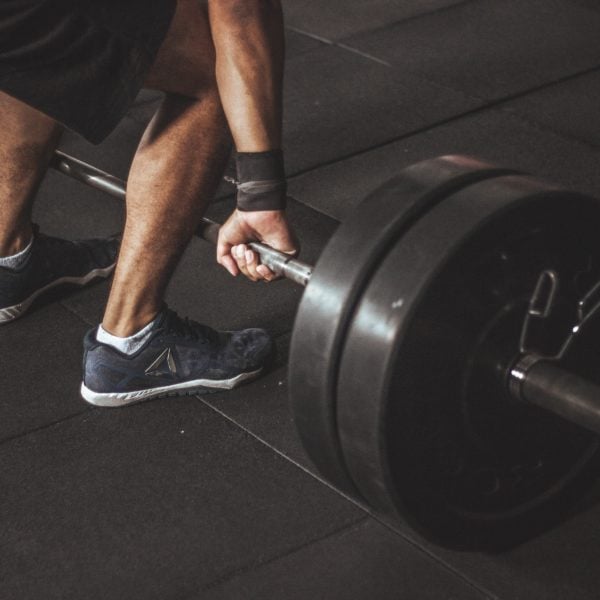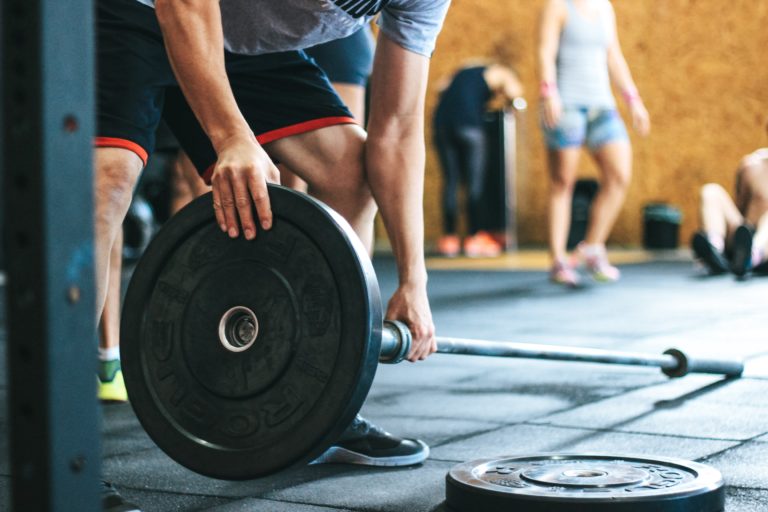From Genes to Cardiovascular Well-being: Understanding Blood Pressure and Exercise
Aira
on
November 23, 2023
Overview
What is Blood Pressure?
If you are a health-conscious individual, you are no stranger to monitoring your vital signs, such as your heart rate, oxygen levels, and blood pressure. Blood pressure is a fundamental physiological measure that reflects the force exerted by circulating blood against the walls of blood vessels.
It is a critical indicator of cardiovascular health, providing insights into the efficiency and resilience of the circulatory system. Typically expressed as two values, systolic over diastolic, blood pressure is measured in millimeters of mercury (mmHg).
The systolic pressure represents the force exerted on arterial walls during the heart’s contraction or heartbeat, while diastolic pressure denotes the force when the heart is in a relaxed state between beats. For example, a blood pressure reading of 120/80 mmHg indicates a systolic pressure of 120 mmHg and a diastolic pressure of 80 mmHg.
Maintaining optimal blood pressure is crucial for preventing cardiovascular and other diseases. High blood pressure (hypertension) can strain arteries, leading to damage and increasing the risk of heart disease and stroke. Conversely, low blood pressure (hypotension) may result in insufficient blood flow to vital organs.
Blood pressure is influenced by several factors, such as underlying medical disorders, lifestyle choices, and heredity. A balanced diet, regular exercise, and stress reduction all help to keep blood pressure readings in a healthy range.
Blood pressure monitoring and management are crucial components of preventative healthcare, and medical practitioners frequently utilize these measurements to determine a patient’s cardiovascular problem risk and develop personalized treatment plans.

How Does Exercise Help Regulate Blood Pressure?
Exercise is essential for controlling blood pressure because it activates several physiological processes that support heart function. The beneficial effects of regular exercise on the heart’s strength and efficiency are one of its main advantages. As the heart gets stronger from exercise, it can pump blood more efficiently, which lowers blood pressure by lowering the power needed for circulation.
Exercise also encourages blood vessels to dilate, which increases their flexibility and lowers blood flow resistance. Increased nitric oxide production and function, a chemical that aids in relaxing blood vessel walls, enhance this vasodilation.
Frequent exercise also helps with weight control, which is another important aspect of blood pressure regulation. Retaining a healthy weight lessens the load on the heart and lowers the chance of developing hypertension.
Exercise also has the benefit of lowering stress, which helps to offset one of the factors that raise blood pressure. Regular exercise is a natural way to decrease stress, and chronic stress can result in persistently high blood pressure.
What Affects Blood Pressure?
Numerous factors, including as genetics, lifestyle, and underlying medical disorders, can affect blood pressure. An individual’s blood pressure can also vary depending on their genetic predispositions. Stress, physical exercise, and diet all play important roles in blood pressure regulation. Sedentary lifestyles, poor food choices, and long-term stress can all raise blood pressure.
Blood pressure is influenced by gender, ancestry, and age; as people age, their blood pressure usually rises. Hormonal abnormalities and renal dysfunction are two illnesses that can aggravate hypertension. To maintain ideal blood pressure, routine monitoring, a healthy lifestyle, and medical intervention when needed, are crucial.
Genetic Factors
Genetic markers linked to blood pressure are variations in specific DNA sequences that have been linked to blood pressure regulation. Knowing these predictive genetic markers can help inform tailored healthcare measures and provide insight into an individual’s susceptibility to hypertension. While many genes play a role in controlling blood pressure, several important genetic variants have been found by in-depth research.
ACE (Angiotensin-Converting Enzyme) Gene
The ACE gene encodes the angiotensin-converting enzyme, which plays a crucial role in the renin-angiotensin-aldosterone system (RAAS), a pathway that regulates blood pressure and fluid balance. Variations in the ACE gene have been associated with differences in blood pressure response, influencing susceptibility to hypertension.
AGT (Angiotensinogen) Gene
AGT gene variants can affect the generation of angiotensin II, a powerful vasoconstrictor, as angiotensinogen is a precursor protein in the RAAS. Variations in blood pressure levels have been associated with variants such as rs699 in this gene.
EDN1 (Endothelin 1) Gene
Studies have shown how genetic variants at the endothelin 1 gene affect the risk of high blood pressure and how exercise impacts blood pressure. It was found that in less fit individuals, a specific gene variation (rs5370) was linked to a higher risk of high blood pressure. This link wasn’t as strong in highly fit individuals. The gene seems to affect blood pressure, but the impact is influenced by how fit a person is.
ADD1 (Alpha-Adducin) Gene
The protein that the ADD1 gene codes for is involved in the kidneys’ sodium transport, which has an impact on blood volume and, in turn, blood pressure. Particularly among people who are sensitive to salt, genetic variations in ADD1 have been linked to hypertension.
NOS3 (Nitric Oxide Synthase 3) Gene
Nitric oxide is a vasodilator that helps relax blood vessels. The NOS3 gene influences the production of nitric oxide, and certain variants, such as rs1799983, are linked to endothelial dysfunction, reducing the ability of blood vessels to dilate properly and potentially contributing to hypertension.
GNB3 (G Protein Subunit Beta 3) Gene
G-proteins play a role in signal transduction, and the GNB3 gene is involved in this process. Variations in GNB3 have been associated with increased sympathetic nervous system activity and may contribute to elevated blood pressure.
CYP11B2 (Aldosterone Synthase) Gene
The hormone aldosterone controls the body’s water and salt balance. Genetic polymorphisms in the CYP11B2 gene, which affect aldosterone synthesis, have been associated with hypertension, especially when it comes to salt sensitivity.
SH2B3 (SH2B Adaptor Protein 3) Gene
A protein involved in signal transduction in the vascular system is encoded by the SH2B3 gene. Variants in SH2B3’s genetic code have been linked to elevated blood pressure, potentially via controlling blood vessel tone.
Research into the genetic markers of blood pressure is a complicated and continuous field of study. It’s critical to remember that lifestyle variables and genetics interact and that this interaction raises a person’s overall risk of hypertension.
Although genetic testing can offer useful information, maintaining a healthy lifestyle with regular exercise, stress reduction, and a balanced diet is still essential for preventing and controlling high blood pressure. Proactive monitoring and early management may be beneficial for those with a family history of hypertension to lower their risk of cardiovascular disease and other detrimental effects.
Environmental Factors
Environmental factors play a significant role in influencing blood pressure, contributing to the complex interplay between genetics and lifestyle. Understanding these environmental factors is essential for developing strategies to prevent and manage hypertension.
Dietary Choices
Bad eating habits can lead to high blood pressure, especially when consuming foods that are heavy in sodium (table salt) and low in potassium. Consuming too much sodium throws off the body’s fluid equilibrium, which raises blood pressure and volume. On the other hand, foods high in potassium, like fruits and vegetables, can offset the effects of sodium on hypertension.
Physical Activity
One of the most important environmental factors influencing blood pressure is regular physical activity. Aerobic exercise helps maintain a healthy weight, strengthens the heart, and enhances blood vessel function. Conversely, sedentary lives increase the risk of weight gain and cardiovascular diseases like hypertension.
Obesity and Weight Gain
Excess body weight, especially abdominal obesity, is strongly associated with hypertension. Hormones and inflammatory chemicals produced by adipose tissue can affect blood vessel function and raise blood pressure. Blood pressure control depends on maintaining a healthy weight through a balanced diet and frequent exercise.
Alcohol Consumption
Consuming too much alcohol might cause blood pressure to rise. While there may be some cardiovascular benefits to moderate alcohol use, binge or heavy drinking can raise blood pressure. Following suggested alcohol intake guidelines is essential to reducing the potential effects of alcohol on blood pressure.
Smoking and Tobacco Use
Blood pressure rises as a result of arterial stiffness and blood vessel narrowing brought on by tobacco smoking and secondhand smoke exposure. Additionally, smoking reduces the efficiency of antihypertensive drugs. Giving up smoking is essential for controlling blood pressure and enhancing general cardiovascular health.
Stress and Mental Health
Due to the sympathetic nervous system’s activation and the release of stress hormones, prolonged stress can aggravate hypertension. Furthermore, unhealthy coping strategies like binge eating, smoking, or drinking too much alcohol in reaction to stress can make blood pressure problems worse. Good stress-reduction strategies, such as mindfulness and relaxation training, are crucial for preserving ideal blood pressure.
Sleep Quality and Duration
Blood pressure has been related to inadequate or poor-quality sleep. Chronic sleep deprivation can upset the delicate balance of hormones that affect blood pressure, as sleep is essential for maintaining this equilibrium. A sound sleep schedule is essential for maintaining cardiovascular health in general.
Environmental Toxins
Hypertension may be exacerbated by exposure to specific environmental contaminants, such as heavy metals and air pollution. These pollutants may directly affect the cardiovascular system, causing oxidative stress and inflammation.
Preventing and controlling high blood pressure primarily involves modifying lifestyle choices and forming healthy behaviors to address these environmental influences.
People who are predisposed to hypertension, particularly those with a family history, ought to place a high priority on leading heart-healthy lifestyles that include a balanced diet, frequent exercise, stress reduction, abstinence from tobacco and excessive alcohol use, and stress management. Long-term cardiovascular health can be enhanced by early intervention and routine monitoring.
How is Blood Pressure Related to Heart Health?
Blood pressure is a vital component of cardiovascular health and is closely linked to heart health. Systolic pressure, which is measured during a pulse, and diastolic pressure, which is measured in between heartbeats, together determine the force that blood traveling through arteries exerts on their walls. Ensuring adequate blood pressure is crucial for the overall circulatory function and the heart’s efficiency.
High blood pressure, often known as hypertension, puts more strain on the heart and arteries and raises the possibility of developing life-threatening heart-related illnesses. The increased resistance to blood flow necessitates greater effort from the heart, which may result in left ventricular hypertrophy. This can eventually lead to heart failure, a disorder in which the heart is unable to pump blood efficiently.
On the other hand, hypotension, or low blood pressure, can lead to insufficient blood flow to essential organs, impairing their functionality and possibly producing symptoms like lightheadedness or fainting. The key to heart health is keeping blood pressure at a healthy level.
Blood pressure regulation is significantly influenced by lifestyle factors, such as stress management, frequent exercise, and a balanced diet. Maintaining heart health and preventing cardiovascular disorders need routine blood pressure monitoring and obtaining medical advice for prompt management.
Ways to Manage Blood Pressure
To preserve cardiovascular health and avoid problems like heart disease and stroke, blood pressure management is crucial. Changing one’s lifestyle in addition to seeking medical attention when needed can help manage blood pressure.
Healthy Diet
A heart-healthy diet that prioritizes fruits, vegetables, whole grains, lean proteins, and low-fat dairy products is recommended. One such diet is the Dietary Approaches to Stop Hypertension (DASH) diet. Cutting back on sodium is essential since too much salt raises blood pressure.
- Limit Processed Foods: Processed and packaged foods often contain high levels of sodium. Reading food labels and choosing fresh, whole foods can help reduce sodium intake and contribute to better blood pressure management.
- Increase Potassium Intake: Potassium-rich foods, such as bananas, oranges, leafy greens, and potatoes, can help counteract the effects of sodium on blood pressure. A balance between sodium and potassium is essential for heart health.
- Limit Caffeine Intake: While the relationship between caffeine and blood pressure is complex and varies among individuals, it may be beneficial to limit caffeine intake, especially if sensitivity is observed.
Regular Exercise
Make regular use of your aerobic system by swimming, cycling, jogging, or brisk walking. Engaging in physical activity enhances blood vessel function, fortifies the heart, and aids in weight management. Try to get in at least 150 minutes a week of moderate-to-intense activity.
Maintain a Healthy Weight
Significant reductions in excess weight and body mass index (BMI) can lower blood pressure. Losing weight helps ease the burden on the heart and circulatory system, facilitating the heart’s blood-pumping function.
Limit Substance Intake
When it comes to alcohol drinking, moderation is essential. Blood pressure can be controlled by limiting alcohol consumption to reasonable levels, no more than one drink for women and two for men per day. In addition to damaging blood vessels, smoking, and secondhand smoke exposure can increase blood pressure. A vital first step in enhancing general cardiovascular health is quitting smoking.
Reduce Stress
High blood pressure can be a result of ongoing stress. Include stress-relieving practices into your routine to encourage mental health and relaxation, such as yoga, deep breathing techniques, meditation, or hobbies.
Monitor Blood Pressure Regularly
If blood pressure is often raised, routine home monitoring yields useful information and enables prompt management. Home blood pressure monitors are simple to use and generally accessible.
Medication Adherence
Medication prescribed by a medical expert may be required for those with hypertension. Maintaining blood pressure management requires taking medications as directed. It’s critical to discuss any worries or possible adverse effects with medical professionals.
Manage Chronic Conditions
Effectively managing conditions such as diabetes and kidney disease, which can contribute to high blood pressure, is crucial for overall blood pressure control.
Everyone reacts differently to lifestyle modifications, so getting individualized counseling and direction from a healthcare professional is crucial. Incorporating these tactics with an all-encompassing approach to wellness can support long-term control of blood pressure and general cardiovascular health.
You might be interested in exploring our related traits reports, covering aspects like Weight Loss and Exercise, Insulin Sensitivity and Exercise, among numerous others linked to healthy blood pressure management and exercise.
LifeDNA’s Blood Pressure and Exercise Report
Unlock the secrets to optimal blood pressure management with LifeDNA’s Blood Pressure and Exercise Report. Say goodbye to generic approaches and embrace the power of personalized wellness tailored to your unique genetic profile.
Our cutting-edge genetic analysis delves into your DNA to reveal how your genes influence your blood pressure, response to exercise, and dietary needs. With this invaluable insight, LifeDNA crafts a customized plan to help you achieve and maintain healthier blood pressure.
The LifeDNA’s Fitness Report including the Blood Pressure and Exercise Report provides you with targeted exercise recommendations aligned with your genetic makeup for maximum impact, as well as deep insights into how your genes impact your metabolism. We offer ongoing support and updates, ensuring your plan evolves with your changing needs.
Don’t settle for one-size-fits-all solutions; prioritize your health with LifeDNA. Take charge of your blood pressure journey by unlocking the potential within your DNA. Embrace the future of wellness and start your LifeDNA journey today.
Visit our website now to avail of LifeDNA’s personalized plans and elevate your blood pressure management to new heights. Your healthiest self awaits — start LifeDNA today!
Summary
- A vital physiological indicator, blood pressure represents the force that blood moving through blood vessels exerts on their walls.
- Blood pressure is an essential indicator of cardiovascular health that sheds light on the effectiveness and durability of the circulatory system.
- Exercise triggers several physiological mechanisms that promote heart function, and it is crucial for blood pressure regulation.
- Blood pressure can be influenced by a wide range of factors, such as heredity, lifestyle, and underlying medical conditions. Genetic predispositions can also affect an individual’s blood pressure.
- Blood pressure control is essential to maintain cardiovascular health and to prevent issues like heart disease and stroke. Blood pressure can be managed by making lifestyle changes and getting medical advice when necessary.
References
- https://www.hopkinsmedicine.org/health/conditions-and-diseases/vital-signs-body-temperature-pulse-rate-respiration-rate-blood-pressure
- https://www.nhs.uk/common-health-questions/lifestyle/what-is-blood-pressure/
- https://www.mayoclinic.org/diseases-conditions/high-blood-pressure/in-depth/high-blood-pressure/art-20045206#:~:text=Regular%20exercise%20makes%20the%20heart,This%20lowers%20blood%20pressure.
- https://medlineplus.gov/genetics/gene/ace/#:~:text=The%20ACE%20gene%20provides%20instructions,and%20salts%20in%20the%20body.
- https://pubmed.ncbi.nlm.nih.gov/10713906/
- https://www.ahajournals.org/doi/10.1161/HYPERTENSIONAHA.107.093609
- https://www.ncbi.nlm.nih.gov/pmc/articles/PMC6635650/#:~:text=%CE%B1%2Dadducin%2D1%20(ADD1,of%20hypertension%20via%20salt%20sensitivity.
- https://pubmed.ncbi.nlm.nih.gov/16487269/
- https://www.ncbi.nlm.nih.gov/pmc/articles/PMC4358565/#:~:text=Aldosterone%20synthase%20is%20a%20mitochondrial,is%20associated%20with%20essential%20hypertension.
- https://www.ncbi.nlm.nih.gov/pmc/articles/PMC4763980/#:~:text=Summary,disease%20and%20its%20devastating%20consequences.
- https://pubmed.ncbi.nlm.nih.gov/28411895/
- https://www.ahajournals.org/doi/full/10.1161/01.hyp.37.2.187
- https://www.heartfoundation.org.au/bundles/your-heart/blood-pressure-and-your-heart#:~:text=High%20blood%20pressure%20is%20one,regularly%20by%20a%20health%20professional.
- https://www.heart.org/en/health-topics/high-blood-pressure/changes-you-can-make-to-manage-high-blood-pressure
- https://www.mayoclinic.org/diseases-conditions/high-blood-pressure/in-depth/high-blood-pressure/art-20046974
*Understanding your genetics can offer valuable insights into your well-being, but it is not deterministic. Your traits can be influenced by the complex interplay involving nature, lifestyle, family history, and others.
Our reports have not been evaluated by the Food and Drug Administration. The contents on our website and our reports are for informational purposes only, and are not intended to diagnose any medical condition, replace the advice of a healthcare professional, or provide any medical advice, diagnosis, or treatment. Consult with a healthcare professional before making any major lifestyle changes or if you have any other concerns about your results. The testimonials featured may have used more than one LifeDNA or LifeDNA vendors’ product or reports.


















